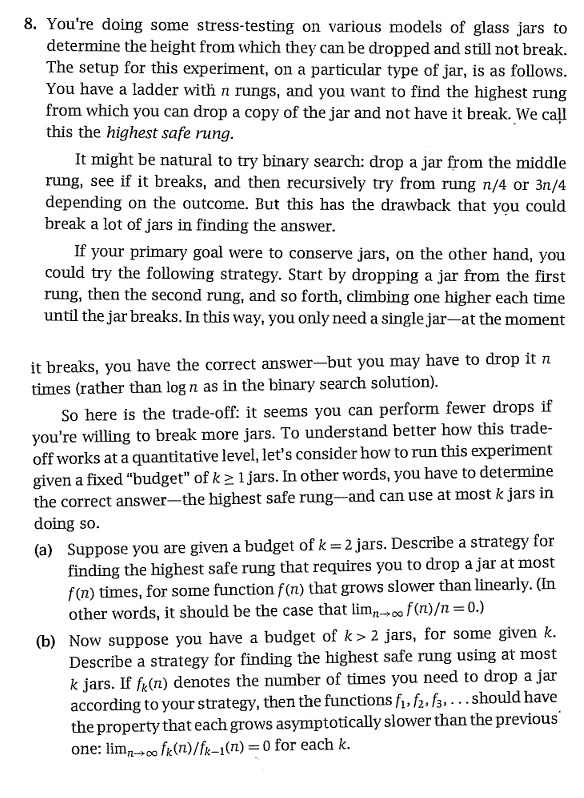
You're doing some stress-testing on various models of glass jars to determine the height from which they can be dropped and still not break. The setup for this experiment, on a particular type of jar, is as follows. You have a ladder with n rungs, and you want to find the highest rung from which you can drop a copy of the jar and not have it break. We call this the highest safe rung. It might be natural to try binary search: drop a jar from the middle rung, see if it breaks, and then recursively try from rung n/4 or 3n/4 depending on the outcome. But this has the drawback that you could break a lot of jars in finding the answer. If your primary goal were to conserve jars, on the other hand, you could try the following strategy. Start by dropping a jar from the first rung, then the second rung, and so forth, climbing one higher each time until the jar breaks. In this way, you only need a single jar -at the moment it breaks, you have the correct answer - but you may have to drop it n r times (rather than log n as in the binary search solution). So here is the trade-off: it seems you can perform fewer drops if you're willing to break more jars. To understand better how this tradeoff works at a quantitative level, let's consider how to run this experiment given a fixed "budget" of k > 1 jars. In other words, you have to determine the correct answer - the highest safe rung -and can use at most k jars in doing so. Suppose you are given a budget of k = 2 jars. Describe a strategy for finding the highest safe rung that requires you to drop ajar at most f(n) times, for some function fin) that grows slower than linearly. (In other words, it should be the case that lim_n rightarrow infinity f(n) = 0) Now suppose you have a budget of k > 2 jars, for some given k. Describe a strategy for finding the highest safe rung using at most k jars. If f_k(n) denotes the number of times you need to drop a jar according to your strategy, then the functions f_1,f_2,f_3,... should have the property' that each grows asymptotically slower than the previous one: lim _n rightarrow infinity f_k (n) / f_k -1 (n) = 0 for each k







